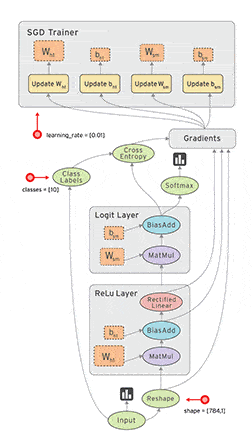Deep Learning is one of the key parts of data science. As data becomes increasingly important and accessible, today’s biggest companies are rapidly investing in deep learning. In fact, it is considered to be so vital to future technologies that many are sharing their own results and discoveries with the public. Researchers have been playing with the idea of deep learning for decades, but it has only blossomed in recent years. With companies like Facebook and Google pouring funds and resources into research, consumers are finally seeing the results of deep learning for themselves. Rather than staying behind closed doors, ordinary folks are already face-to-face with deep learning and don’t even know it.
DeepFace. The appropriately named project from Facebook is “closing the gap to human-level performance in face verification.” If you’ve ever gone to tag a picture, only to have completely random name pop up, you’ve experienced poor facial recognition. The inabilities of current recognition software has created a population that simply distrusts it entirely, and has spawned plenty of failure compilations and web articles. Many facial recognition programs use thousands of engineered features to fuel the recognition process. DeepFace, on the other hand, is based in the development of an effective deep neural net that leverages a huge dataset of faces, allowing them to have a real understanding of general traits and features. This shift in approach has revamped the process of facial recognition, and DeepFace reached an accuracy of 97.35% on their Labeled Faces in the Wild (LFW) dataset. That is near human-level performance, and might just be better than some humans. More importantly, the results completely overshadow other methods, reducing the error rates of other state of the art programs by over 27%.
Mike Schroepfer, the chief technology officer at Facebook, shares even more amazing numbers:
“Teaching computers to be able to detect and differentiate between objects — to train them to understand what the patterns in the pixels mean — is something the Facebook AI Research (FAIR) team has been working on for the last year. They’ve made huge progress in a short time. FAIR has been able to create more than a 60 percent improvement in its object detection and segmentation technology in a year.”

Facebook isn’t the only one using deep learning to change our day-to-day experiences. Self-driving cars would be almost impossible without deep learning. It is vital that the car be able to recognize millions of details and to respond to complex situations with speed. Deep learning is the key to that future. Nvidia has already decided to create GPU’s for the express purpose of enabling deep learning capabilities. This will be a great platform for the driverless car to evolve. Nvidia Drive PX, the newest addition, is explicitly marketed as “the world’s most advanced autonomous car platform—combining deep learning, sensor fusion, and surround vision to change the driving experience.” Even in marketing, it is clear that deep learning is one the few key ingredients to successful driverless car models.
Of course, their love for deep learning doesn’t stop there. It continues into their own courses on the topic. The fact that deep neural networks have proven to be massive game changers has moved Nvidia to share their tools with outside parties. In 2014, the company noted the increased importance of deep learning and opted to share their own library of primitives for deep neural networks, the cuDNN. This is barely even the tip of the iceberg for companies developing and sharing deep learning tools, solutions and data. One smart move from Google just opened up doors for data scientists, and also for the field as a whole.
Industry Leaders Want to Share Tools and Data
If there was any question just how important deep learning is to innovation, Google Brain, Google’s Deep Learning branch, has a big surprise. Vincent Vanhoucke is a principal scientist at Google. He is also a technical lead and manager in their deep learning infrastructure team. His next role will include being a professor for an upcoming free 3-month course on Udacity. Deep Learning has played a huge role at Google in the recent past, including Voice Search, a project Vanhoucke was involved in, himself. He describes the course as an opportunity for data scientists and machine learning students to learn the skills necessary to move to the forefront of career opportunities and innovative emergent technologies.
“Our overall goal in designing this course was to provide the machine learning enthusiast a rapid and direct path to solving real and interesting problems with deep learning techniques, and we’re now very excited to share what we’ve built!”
TensorFlow is one central topic of the course. This machine learning software library is not only from Google—it was made open source in November 2015. It gives tools and data away to the community for free. It allows smaller companies to leverage the data that tech giants already possess. Facebook has also done their own similar “community service.” Many of their AI teams actively use the open source software Torch. Last year, they made their own Torch optimized deep-learning modules open source. As the Facebook team said themselves, “progress in science and technology accelerates when scientists share not just their results, but also their tools and methods.”

Though these companies could continue to hog all the data for themselves, they are making clear efforts to share it and create a movement throughout the entire scientific community. So what does Google really get out of this course? Prospects. Academics and smaller companies can’t create as quickly as companies like Google because they lack the necessary data and tools. By sharing some of their information and teaching people how to use it, Google is also opening up their own future in the market. They, too, need data from outside developers and sources. This method of sharing generates more talent, knowledge and ideas that will offer returns in time. Google knows Deep Learning is the future: “Machine Learning is one of the fastest-growing and most exciting fields out there, and deep learning represents its true bleeding edge.”
Like this article? Subscribe to our weekly newsletter to never miss out!
featured image source: GoogleResearch






